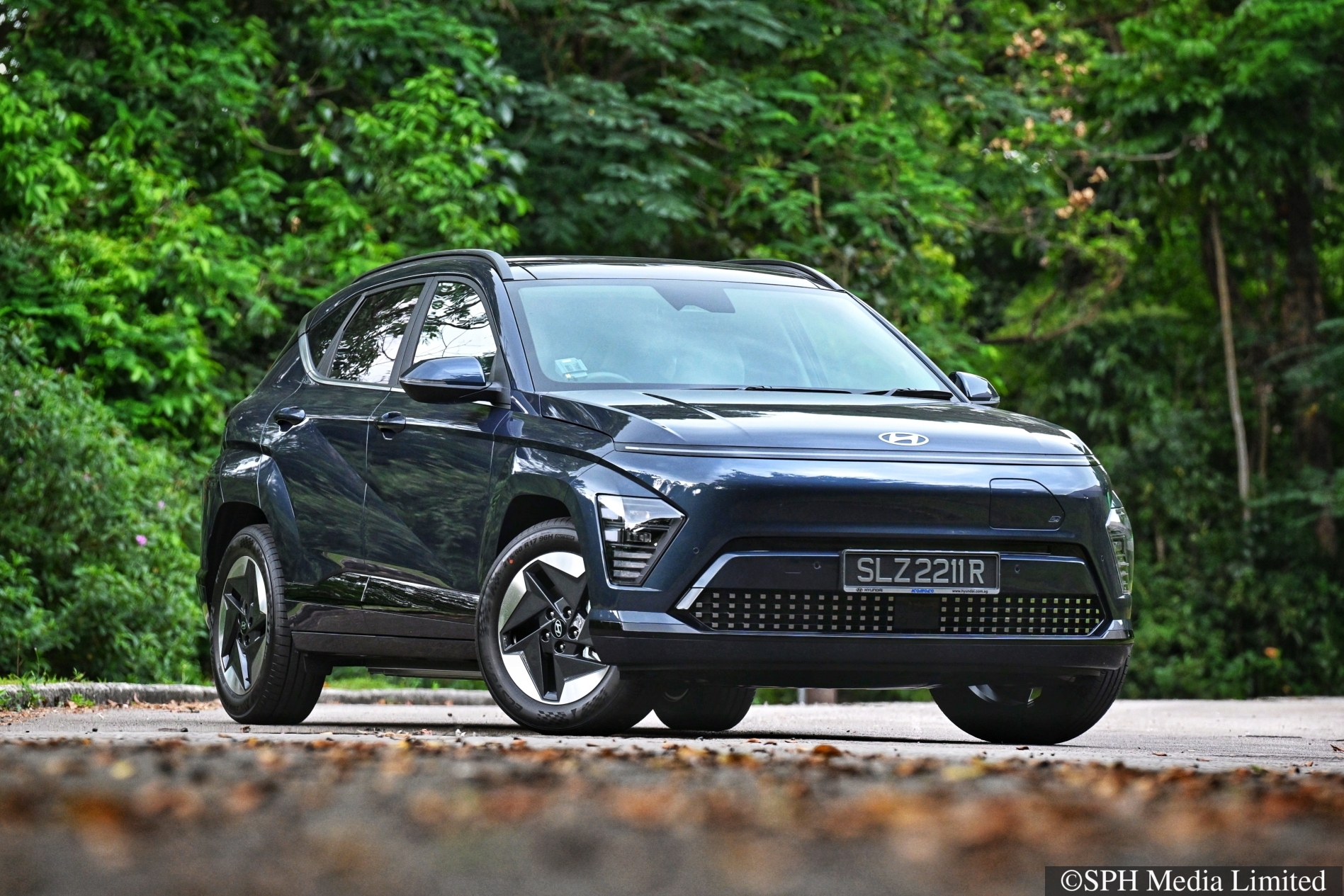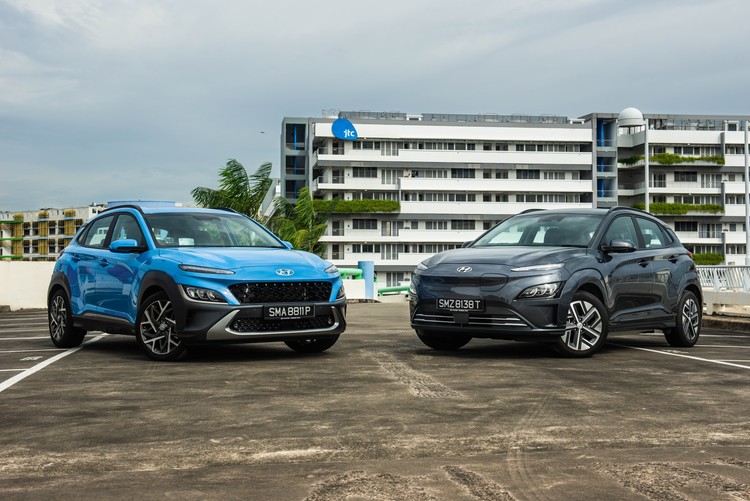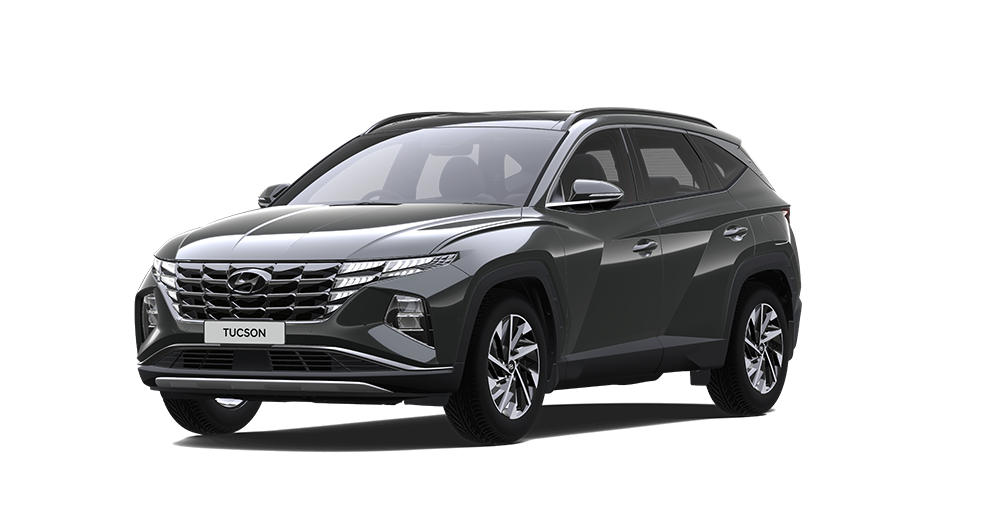SINGAPORE – If the award-winning Hyundai Ioniq 5 is too avant-garde or esoteric for you, the Hyundai Kona Electric might well be a more palatable alternative.
The car is good-looking in a conventional way, drives well and has enough tech to make it feel chic and modern, but not overwhelmingly so.
In form, it looks like the Kona Hybrid, which was reviewed here in September 2023. Hyundai has purposely styled its Kona range to look electric, with a grille-less front section and a slim LED strip running across the entire width.
From the side, the most distinctive stroke of the designer’s pen is seen on the C-pillar, which curves inwards to form a dramatic line sweeping towards the front wheel. It gives the car a taut, sporty look.
Inside, the cockpit is reminiscent of the Ioniq 5’s, with a panoramic screen incorporating infotainment on the left and instrumentation on the right. Air-conditioning vents blend into a clean linear dash and neat panels of physical switches complement the soft keys found on the touchscreen.
It is a good mix which offers superb functionality without compromising form. Physical buttons include those for seat cooling – a luxury feature in Singapore. Wireless phone-charging is another big plus.
Phone-pairing, however, is a little glitchy. Once paired, the connection is not automatic each time you return to the car. Instead, you have to activate it by tapping a couple of keys. There is wireless Apple CarPlay and Android Auto, if you are wondering.
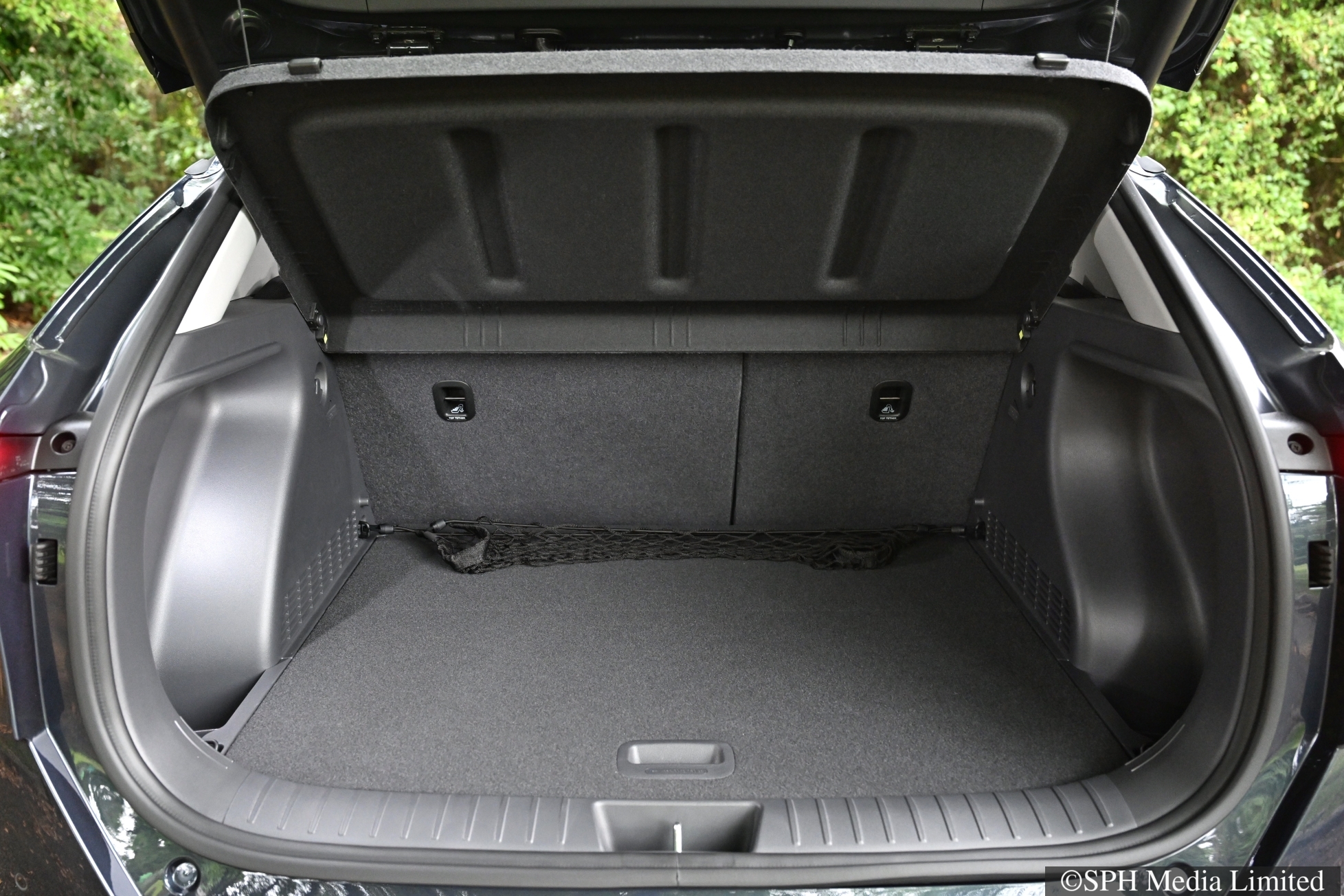
Bigger than its predecessor, the Kona Electric is about the size of the Honda HR-V.
Its boot, however, is bigger at 466 litres, although loading bulkier items will still require at least one side of its 60:40 split rear-seat backrests to collapse. A 27-litre front storage, or frunk, offers additional stowage.
Second-row occupants get decent space, thanks in part to a flat floor, while those in front enjoy good ergonomics.
A discreetly lit storage tray above the glovebox adds a touch of class, while the driver has a commanding perch, with excellent visibility of instrumentation and the road, and ample support for the elbows and lumbar.
The test car is a Standard Range variant with a 48.6kWh lithium-ion polymer battery (from 39.2kWh previously), which powers a front-mounted motor. Rear-wheel drive is reserved for the Ioniq range.
The Kona Electric has paddle shifters to modulate the intensity of brake energy recuperation, which is still the friendliest way of giving the driver a choice in this department. You do not use it often, but when you want to, it is right there at your fingertips.
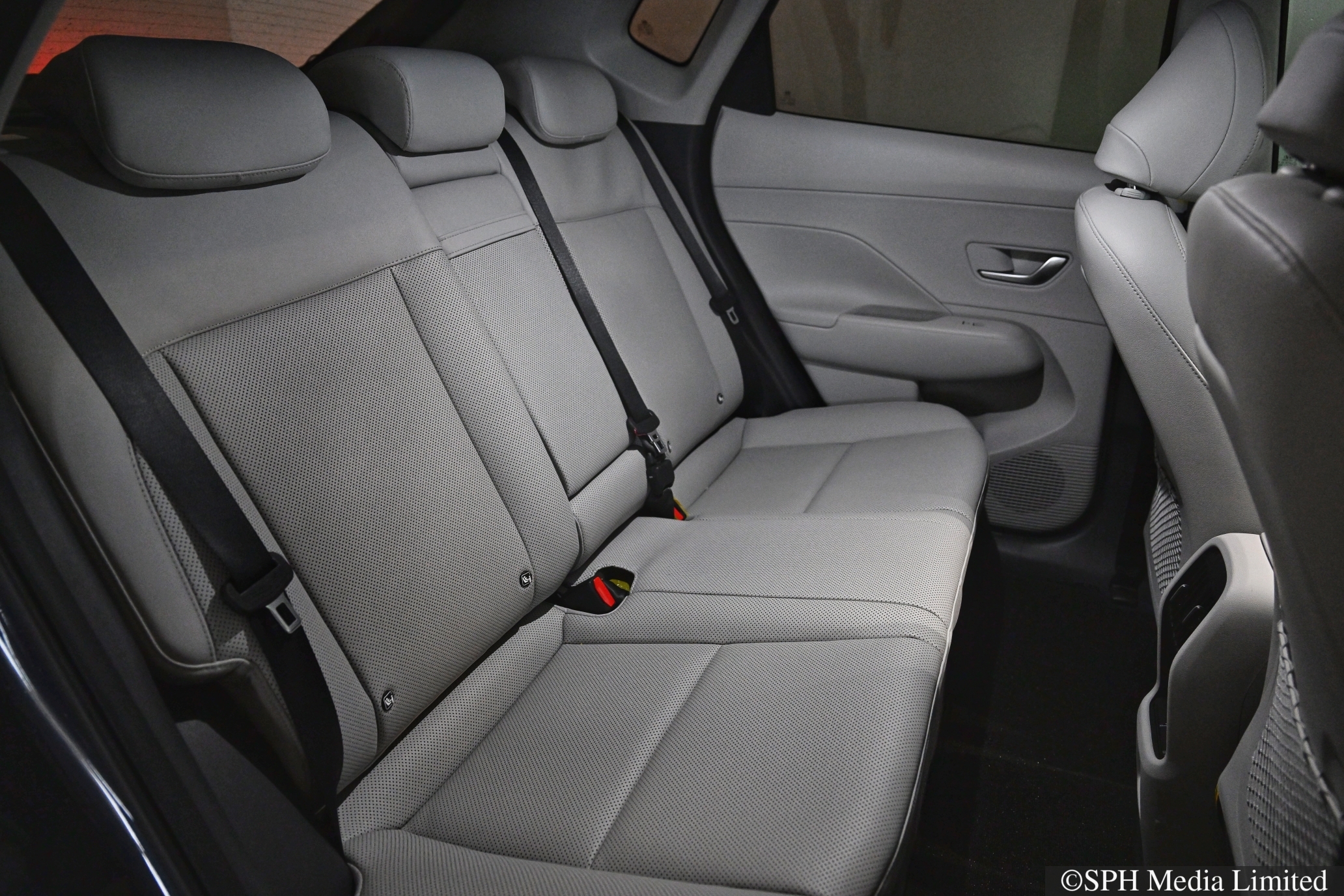
The car has 99kW of power and 255Nm of torque, which qualifies it for the less punitive Category A certificate of entitlement (COE) and yet dishes out a creditable level of driveability. Despite being left in Eco drive mode for all three days, the car is rarely lacking in verve.
It will not win many drag races, but for day-to-day commutes, its ample and accessible torque ensures relative ease.
The test car averages 14.7kWh/100km, which is not quite as impressive as Hyundai’s claimed 12.1kWh/100km.
The previous Long Range test car – also driven almost exclusively in Eco mode – posted 13.7kWh/100km. Its dip in efficiency is likely owing to its expanded size. Even so, 14.7kWh/100km is above average.
Based on its battery size and average consumption, the car is good for 330km on a full battery. At higher speeds, like on the Malaysian highway, that range will shrink noticeably.
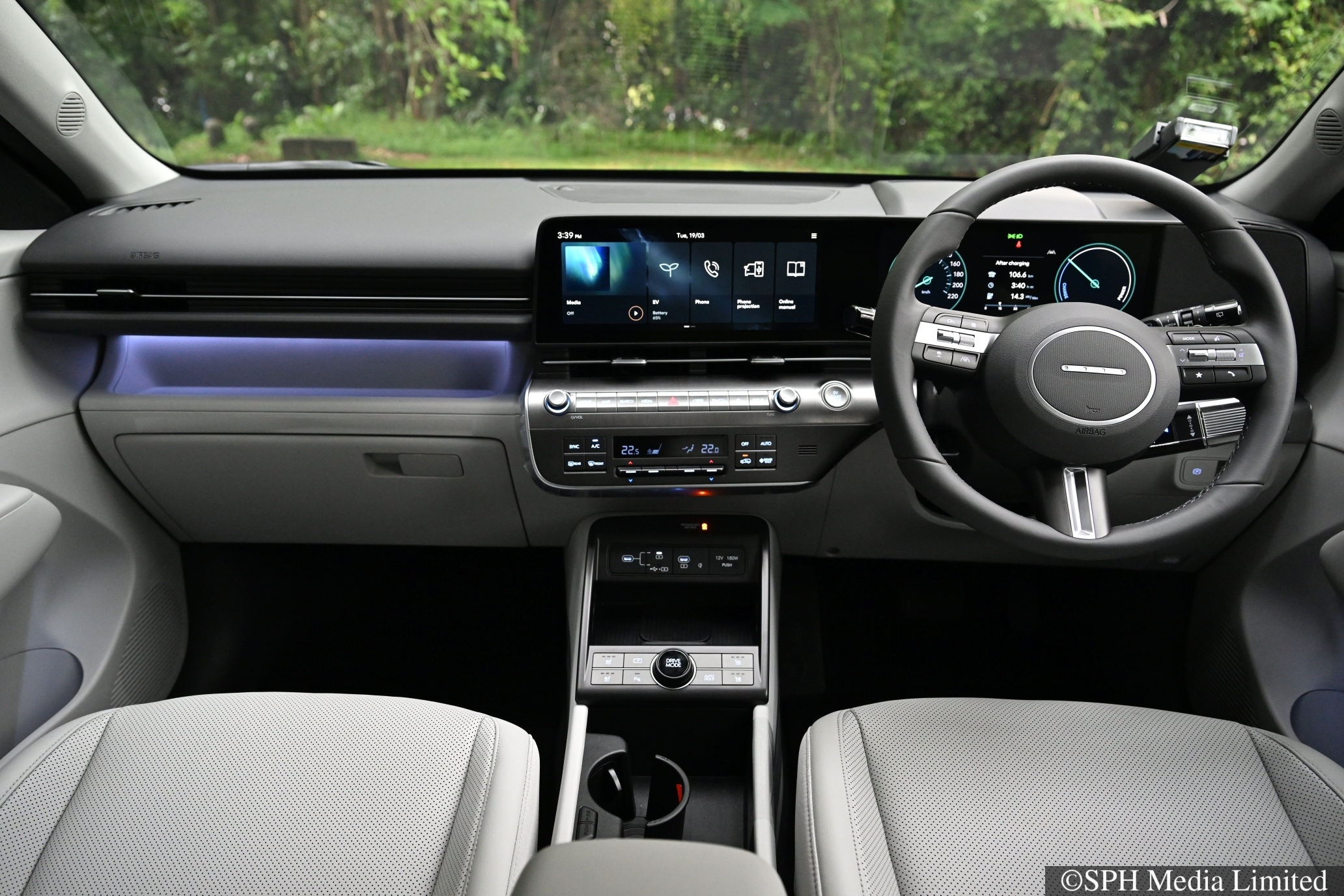
The new Kona Electric has a blend of comfort and dynamism, which works well on Singapore roads. It manages to filter out all but the nastiest of tarmac ruts, with a suspension set-up that is excellent for a compact electric crossover.
Yet, when called upon to execute prompt lane changes and fast sweepers, the urbane-looking Hyundai reveals a spicy side. And being compact, it has no problem negotiating the most sadistic of carpark ramps and tiniest of lanes.
On long stretches, you can activate the car’s adaptive cruise control (ACC), a feature which is increasingly common in South Korean cars, even non-premium models. But like most ACC systems, it is better at reacting to moving vehicles than stationary ones.
If you signal to filter, a blind-spot monitor alerts you to oncoming vehicles with a soft chime and a gently vibrating steering wheel. Active lane-keeping is less intrusive than in many other cars and the head-up display is a boon to those who prefer to keep their eyes on the road.
Together with its good build quality, enviable refinement and competitive pricing, the new Kona Electric joins a growing line-up of Hyundai cars which are increasingly attractive. The fact that it is stylish but not startling is cherry on the icing.
Technical Specifications
Hyundai Kona Electric (Standard Range)
Price: From $169,888 with COE
Motor: Permanent magnet synchronous powered by 48.6kWh battery
Transmission: Single-speed with paddle shifters for energy recuperation force
Power: 99 kW
Torque: 255 Nm
0-100km/h: 9.9 seconds
Top Speed: 162 km/h
Power consumption: 12.1kWh/100km
Agent: Komoco
Rating: 3 out of 5 stars
Source: The Straits Times © SPH Media Limited. Permission required for reproduction.
Test drive the Kona Electric 2024 here: https://hyundai.com.sg/test-drive/
